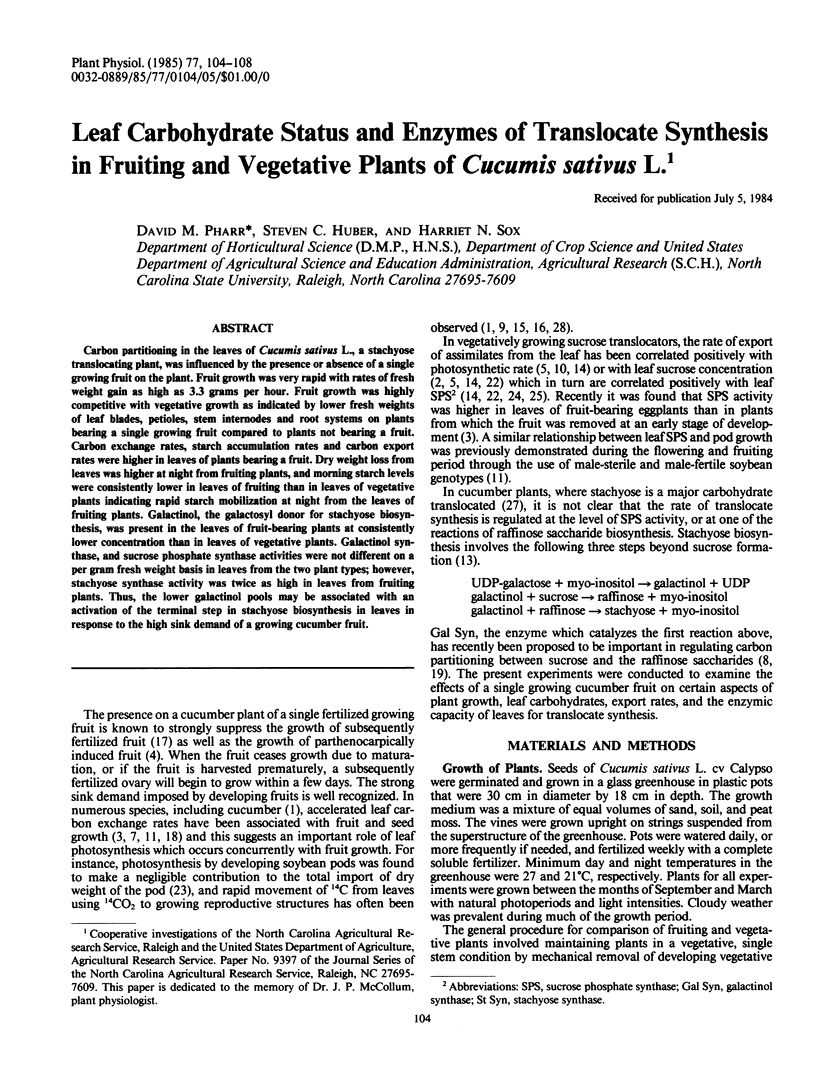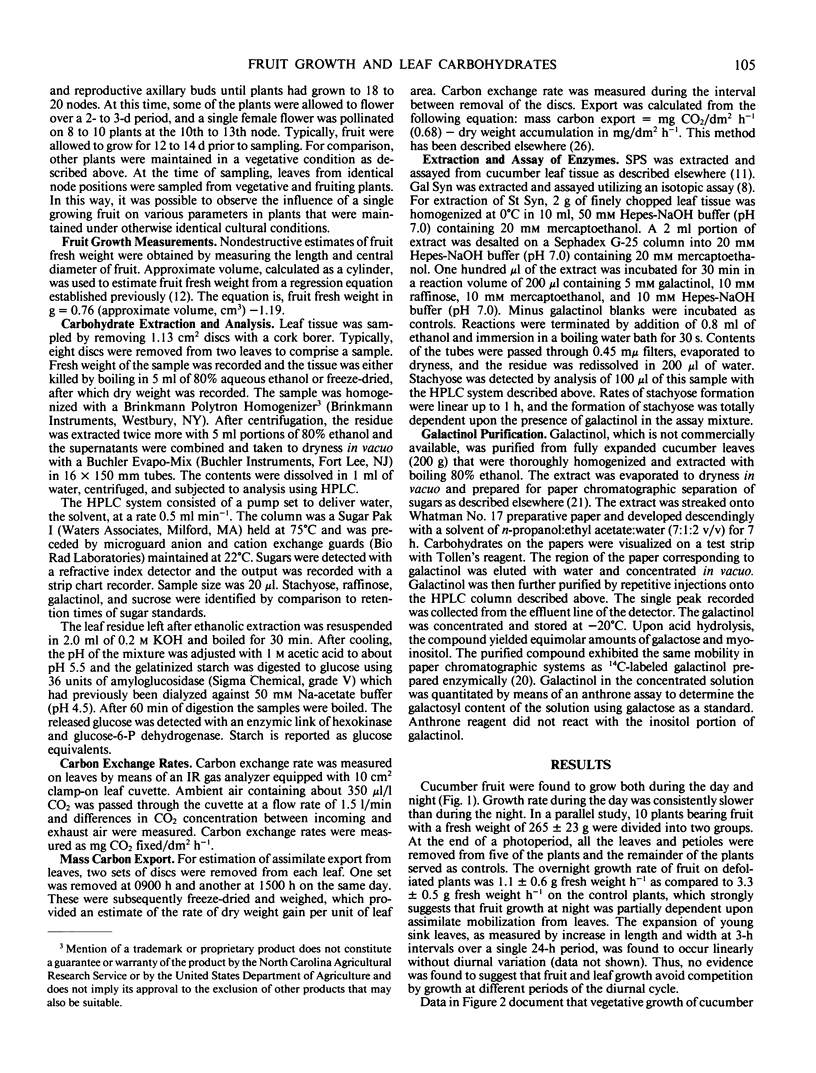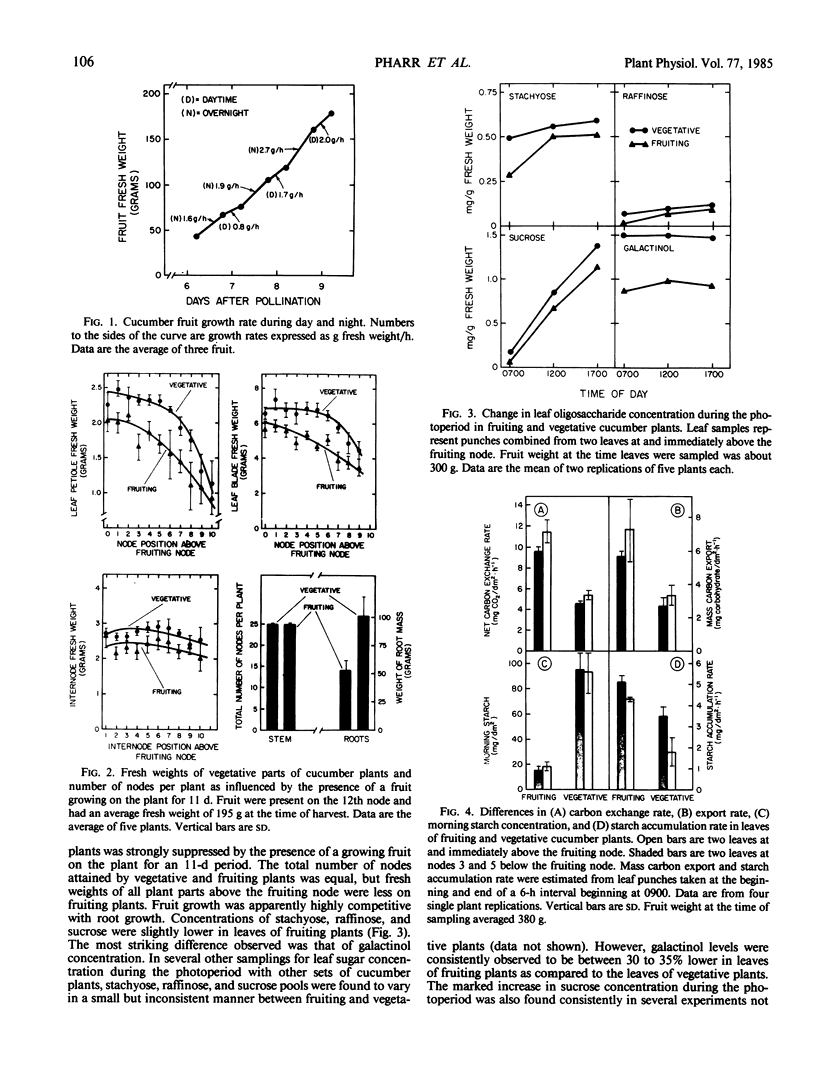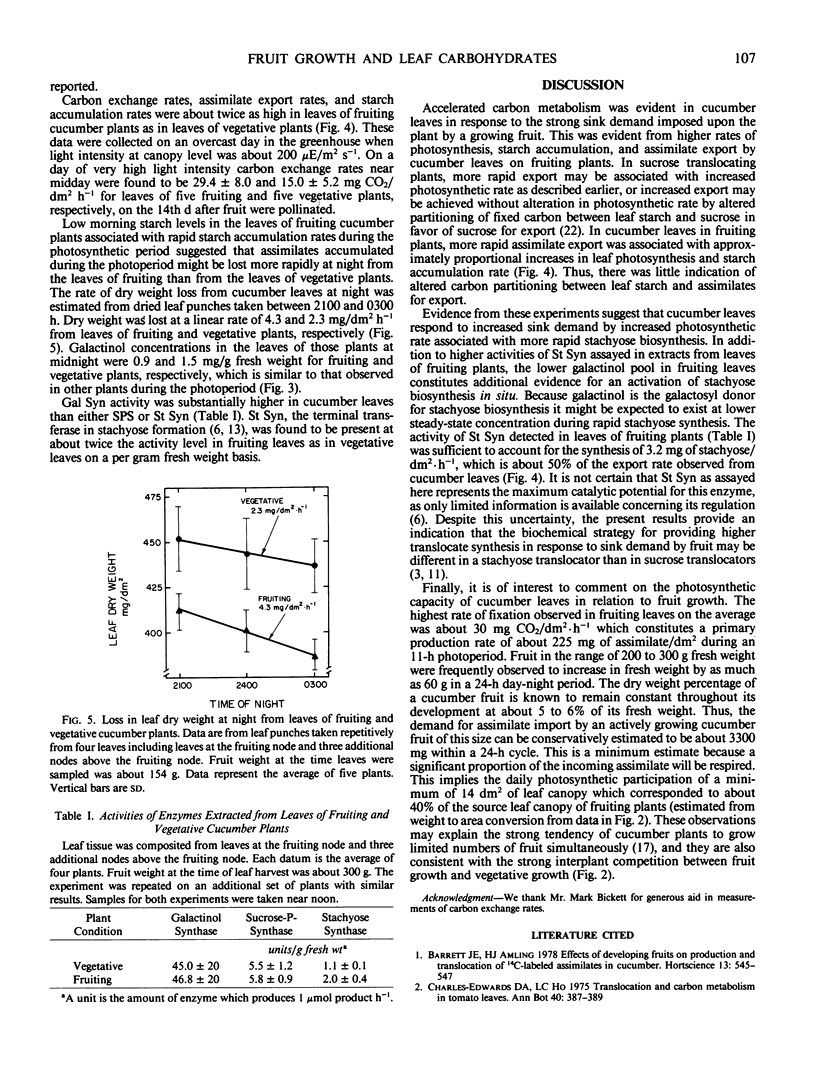Abstract
Carbon partitioning in the leaves of Cucumis sativus L., a stachyose translocating plant, was influenced by the presence or absence of a single growing fruit on the plant. Fruit growth was very rapid with rates of fresh weight gain as high as 3.3 grams per hour. Fruit growth was highly competitive with vegetative growth as indicated by lower fresh weights of leaf blades, petioles, stem internodes and root systems on plants bearing a single growing fruit compared to plants not bearing a fruit. Carbon exchange rates, starch accumulation rates and carbon export rates were higher in leaves of plants bearing a fruit. Dry weight loss from leaves was higher at night from fruiting plants, and morning starch levels were consistently lower in leaves of fruiting than in leaves of vegetative plants indicating rapid starch mobilization at night from the leaves of fruiting plants. Galactinol, the galactosyl donor for stachyose biosynthesis, was present in the leaves of fruit-bearing plants at consistently lower concentration than in leaves of vegetative plants. Galactinol synthase, and sucrose phosphate synthase activities were not different on a per gram fresh weight basis in leaves from the two plant types; however, stachyose synthase activity was twice as high in leaves from fruiting plants. Thus, the lower galactinol pools may be associated with an activation of the terminal step in stachyose biosynthesis in leaves in response to the high sink demand of a growing cucumber fruit.
Full text
PDF




Selected References
These references are in PubMed. This may not be the complete list of references from this article.
- Fader G. M., Koller H. R. Relationships between Carbon Assimilation, Partitioning, and Export in Leaves of Two Soybean Cultivars. Plant Physiol. 1983 Oct;73(2):297–303. doi: 10.1104/pp.73.2.297. [DOI] [PMC free article] [PubMed] [Google Scholar]
- Huber S. C., Wilson R. F., Burton J. W. Studies on Genetic Male-Sterile Soybeans : II. Effect of Nodulation on Photosynthesis and Carbon Partitioning in Leaves. Plant Physiol. 1983 Nov;73(3):713–717. doi: 10.1104/pp.73.3.713. [DOI] [PMC free article] [PubMed] [Google Scholar]
- Rufty T. W., Huber S. C. Changes in Starch Formation and Activities of Sucrose Phosphate Synthase and Cytoplasmic Fructose-1,6-bisphosphatase in Response to Source-Sink Alterations. Plant Physiol. 1983 Jun;72(2):474–480. doi: 10.1104/pp.72.2.474. [DOI] [PMC free article] [PubMed] [Google Scholar]
- Silvius J. E., Chatterton N. J., Kremer D. F. Photosynthate partitioning in soybean leaves at two irradiance levels: comparative responses of acclimated and unacclimated leaves. Plant Physiol. 1979 Nov;64(5):872–875. doi: 10.1104/pp.64.5.872. [DOI] [PMC free article] [PubMed] [Google Scholar]
- Silvius J. E., Kremer D. F., Lee D. R. Carbon assimilation and translocation in soybean leaves at different stages of development. Plant Physiol. 1978 Jul;62(1):54–58. doi: 10.1104/pp.62.1.54. [DOI] [PMC free article] [PubMed] [Google Scholar]


